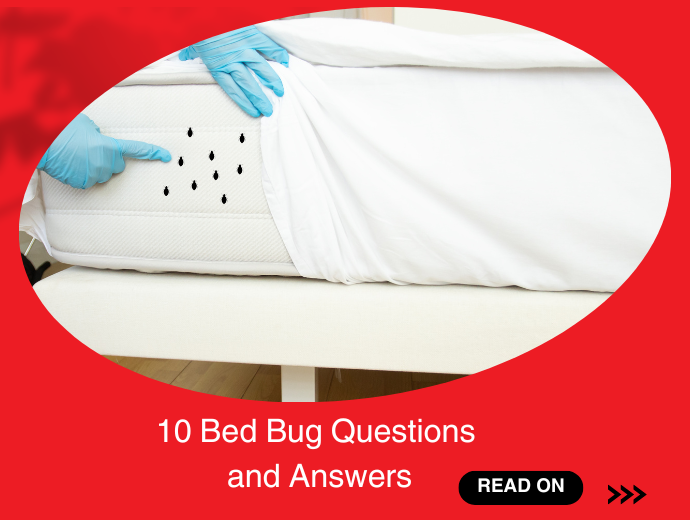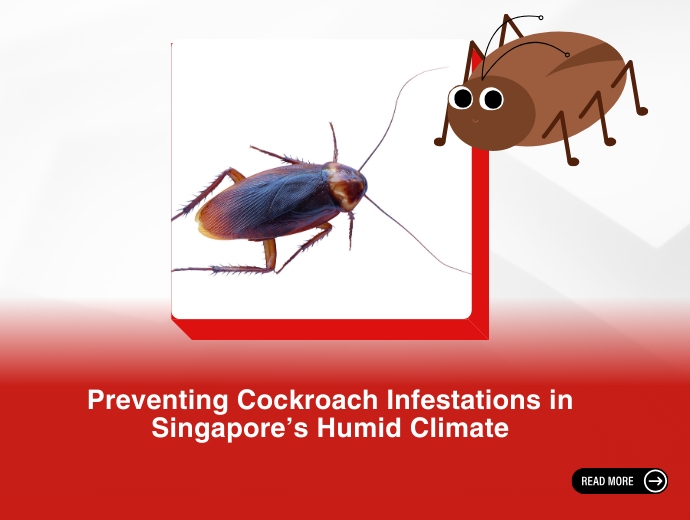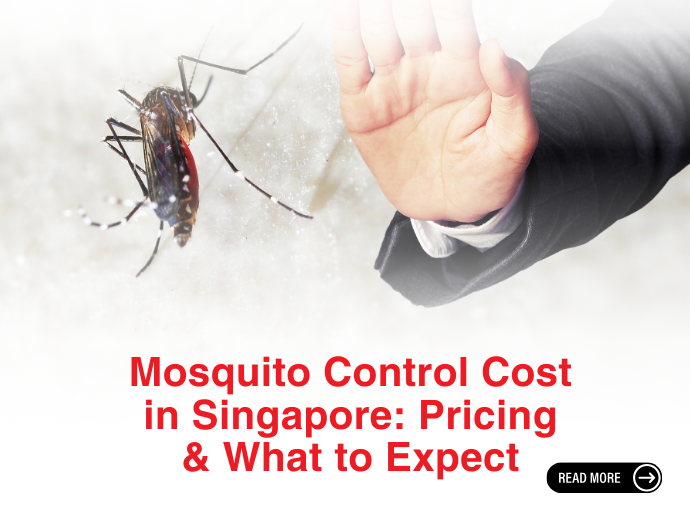Bed bugs can be very difficult to get completely rid of. These nearly invisible, parasitic bloodsuckers have a way of coming into your home, disturbing your sleep, and making you feel tense and nervous. If you have a bed bug battle to win, you are probably concerned with lots of questions. This article has the ten most frequently asked questions about bed bugs and bed bug treatment to fill you in with all the important stuff you have to know.
1. What Are Bed Bugs and How Do I Know If I Have Them?
Bedbugs are small, reddish-brown creatures that like to prey on the blood of both humans and animals. They are about the shape of an apple seed. Look for red, itchy spots on your skin, blood stains on your sheets, or brown spots (feces of the bed bug) on your mattress and bedding to detect bed bugs' presence in your home. Additionally, you look for their exuviae or eggs which are small and white.
2. How Do I Get Rid of Bed Bugs?
You have to carry out a few different tasks to get rid of bed bugs. The first step is to do a deep clean: vacuum your bed, floors, and furniture, and empty the filled bag into the trash. Additionally, launder all linens, clothes, and beddings at the highest temperature 90°C and then dry them at the highest heat settings above 60°C. Afterward, engage the services of a professional pest control company. These companies can use heat treatments, chemical treatments, or a mix of these methods to kill bed bugs.
3. Do DIY Bed Bugs Treatment Work ?
DIY methods like insecticides, diatomaceous earth, or heat treatment can help in dealing with them to some extent but they are usually incomplete on their own. Bed bugs tend to hide in very hard-to-reach spots so professional treatments are generally regarded as more effective.
4. How Long Does It Take to Get Rid of Bed Bugs?
Though the time frame may be different for every situation, you should be able to see positive results within just the first two weeks.
5. How Can You Prevent Bed Bug Infestation?
Preventing bed bugs requires a proactive approach, combining awareness, cleanliness, and strategic measures. Bed bugs are notorious for their resilience and ability to hitchhike, making it essential to stay vigilant, especially in environments prone to infestations like hotels, cinemas, and public transportation.
Firstly, education and awareness are paramount. Understanding the signs of bed bugs can help in early detection and prevention. These pests are small, reddish-brown insects that hide in cracks and crevices during the day and come out to feed at night. Look for physical signs like small blood stains on sheets, dark spots of excrement, or a musty odour. Regularly inspecting sleeping areas, including mattresses, bed frames and bed side tables can help catch an infestation early before it spreads.
Maintaining cleanliness is another crucial step. Regularly washing and drying bedding, curtains, and clothing on high heat can kill bed bugs and their eggs. Vacuuming floors, carpets, and furniture frequently remove any bed bugs and eggs that might be present. Decluttering living spaces reduces hiding spots and makes it easier to spot and eliminate these pests. In shared living spaces like apartments, consider encasing mattresses in bed bug-proof covers to prevent infestations.
6. What Does the Professional Bed Bug Treatment Process Involve?
Various methods are employed by pest control experts, each tailored to the severity and specifics of the infestation. Here are the primary types of professional bed bug treatments available in Singapore:
Chemical Treatments
Chemical treatments is the most common method used to eradicate bed bugs. Professional exterminators apply specially formulated insecticides to infested areas, targeting bed bugs at all life stages. These treatments often include residual sprays, which remain effective for an extended period. The chemicals used are typically safe for humans and pets when applied correctly.
Heat Treatments
Heat treatments involve raising the temperature of the affected area to a level that is lethal to bed bugs. Bed bugs and their eggs cannot survive temperatures above 50°C (122°F). Pest control professionals use specialised equipment to uniformly heat the entire room or specific areas, ensuring that all hiding spots are reached. This method is highly effective and environmentally friendly, as it does not involve chemical use. However, it requires precise execution to ensure all areas are adequately treated.
Steam Treatments
Steam treatments utilise high-temperature steam to kill bed bugs and their eggs on contact. This method is particularly useful for treating mattresses, furniture, and other areas where bed bugs commonly hide. Steam treatments are chemical-free, making them a safe option for sensitive environments such as homes with children or pets. Professional pest control companies use commercial-grade steamers to ensure deep penetration and thorough eradication.
Cryonite Treatments
Cryonite treatments use carbon dioxide snow to freeze and kill bed bugs. The Cryonite machine converts liquid CO2 into dry ice particles, which are then applied to infested areas. The extreme cold rapidly freezes bed bugs and their eggs, causing them to die. This method is non-toxic and leaves no residue, making it an excellent choice for sensitive areas such as kitchens and hospitals. Cryonite treatments are often used in combination with other methods for comprehensive bed bug control.
Each of these professional bed bug treatments offers unique advantages and can be tailored to the specific needs of the infestation. Consulting with a reputable pest control company in Singapore can help determine the most effective approach for your situation, ensuring a bed bug-free environment.
7. What Do I need to do to Prepare for a Bed Bug Treatment?
Preparing for a bed bug treatment is crucial to ensure its effectiveness and to facilitate a smooth process for pest control professionals. Here are some detailed steps to take before the treatment begins:
Prepare Furniture and Rooms
-
- Declutter: Remove clutter from the areas to be treated, such as under the bed, in closets, and around floor skirting. This makes it easier for pest control professionals to access all potential hiding spots.
- Clean: Vacuum the entire house, especially the bedrooms, including floors, carpets, and furniture.
Following these steps will help ensure that your home is bed bug-free.
Preventing bed bugs entirely can be challenging due to their resilience and ability to hitchhike on personal items. Here are some proactive steps you can take to reduce the risk of a bed bug infestation:
While it may not be possible to guarantee that bed bugs will never enter your home, these preventive measures can significantly reduce the risk and help you detect and address any issues early.
Yes, these treatments can potentitally be harmful to your pets and children. However, most professional pest control companies use do not use large amounts of chemicals and these treatments tend to be safe. Additionally, if you follow the instructions of the professional, it will guarantee that your pet and child are taken care of. Among these will be to keep the pets and children out of the area being treated which will usually be several hours after the treatment has been completed.
The professional bed bug treatment is priced differently depending on the extent of the infestation and the size of your property. On average, you should budget around SGD 700 to SGD 2500 for 2 treatments. While the cost may appear to be high, getting a trained professional is the best way to ensure that the bed bugs are thoroughly exterminated as well as to prevent them from coming back. However, you should get quotes from multiple service providers to find the best one that fits your needs, taking note of those who offer some kind of warranty after their treatments, as they are confident in the strategies that they are rendering and will ensure there are no other “hidden costs”.
Coping with bed bugs can be emotionally draining and upsetting. If you notice bugs in your home, then you shouldn't hesitate and contract ORIGIN, experts in bed bug control.



.png)
